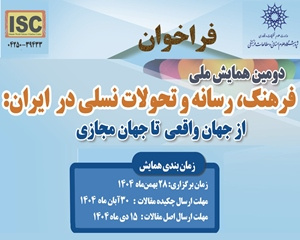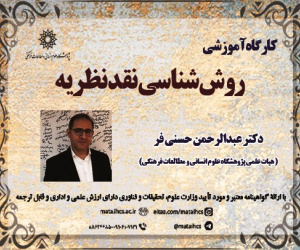طراحی مدل استراتژی بازاریابی صادرات زعفران با رویکرد سبز (مقاله علمی وزارت علوم)
درجه علمی: نشریه علمی (وزارت علوم)
آرشیو
چکیده
زعفران یک محصول غذایی دارای مزیت نسبی در کشور است. این محصول در بازار صادراتی نیازمند مزیت رقابتی است تا به جایگاه شایسته خود دست یابد. مسئله این است که این کالای صادراتی دارای مزیت تولید در یک کشور با محدودیت منابع آبی با کمترین ارزش افزوده و بیشتر از طریق صادرات غیرمستقیم و با برند خصوصی توزیع کنندگان، به کشورهایی مانند اسپانیا صادر شده و در آنجا با بسته بندی جدید و قیمت های بالاتر به کشورهای دیگر صادرات مجدد می گردد. با تغییرات اقلیمی و گرایش روزافزون مصرف کنندگان به محصولات ارگانیک ضرورت دارد که طراحی استراتژی بازاریابی صادرات زعفران با رویکرد سبز مورد مطالعه قرار گیرد. برای مطالعه گسترده تحقیقات داخلی و خارجی، از روش مطالعه نظام مند و برای شناسایی ابعاد استراتژی بازاریابی صادرات با رویکرد سبز، از روش تحقیق آمیخته اکتشافی متوالی استفاده شده است. از تحلیل مضمون و تم از طریق مصاحبه با خبرگان صنعت و دانشگاهی در فاز کیفی استفاده شده است. در فاز کمی پژوهش برای طراحی استراتژی نیز از تکنیک های دی متل فازی و معادلات ساختاری تفسیری استفاده شده است. به کارگیری مولفه هایی مانند ویژگی های شرکت، تحلیل صنعت و بازار زعفران در داخل کشور و بازارهای هدف صادراتی، شناسایی قابلیت های صادراتی شرکت و قابلیت های سبز به همراه برنامه آمیخته بازاریابی به شرکت های صادراتی پیشرو در صنعت زعفران ایران پیشنهاد می گردد.Formulating the Saffron Export Marketing Strategy Leveraging a Green Marketing Orientation
Saffron is a food product with a comparative advantage in the country. This product needs a competitive advantage in the export markets to achieve its valuable position. The problem is that this export commodity with production advantage in a water-scarce country is mostly exported with the least added value to countries such as Spain through indirect exports and under the private label branding of distributors and there it is re-exported to other countries with new packaging and higher prices. With climate change and the increasing tendency of consumers to organic products, it is necessary to study and formulate the saffron export marketing strategy with a green marketing orientation. Systematic review method has been used for extensive study of domestic and foreign researches to identify the dimensions of the export marketing strategy with a green orientation. With an exploratory sequential mix method, content and theme analysis has been used through interviews with industry and academic experts in the qualitative phase. In the quantitative phase of the research, Fuzzy Dematel techniques and interpretive structural equation modeling have been used to formulate the export strategy. The result shows that the use of dimensions such as firm characteristics, analysis of saffron industry and market in domestic and export target markets, identification of the company's export capabilities and green capabilities along with a marketing mixed program is recommended to leading export companies in the Iranian saffron industry.







